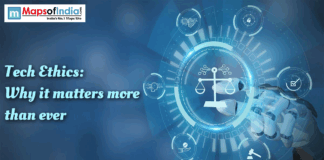Decades back, there was verbal and non-verbal communication; now, another effective way of communication is online communication. As a result, many people have begun to connect through online communication. For example, during the current COVID-19 outbreak, online communication increased tremendously worldwide.
More information is being shared online than ever before. There is a wealth of material available online for the reader to read. People have begun to do everything online, including but not limited to banking, booking tickets, scheduling travel, planning trip, purchasing anything, teaching, having meetings and conferences, one on one or group conversations, dating, and transferring information.
Almost every action that is feasible is carried out online. In contrast, basic digital literacy is required for online activities. Online communication is quickly replacing traditional communication techniques.
Paper-based communication has declined dramatically with the advent of online communication. It is handy, quick, and does not affect the environment. Thus, being a speedy process and maybe communicated from anywhere on the planet.
Types of Online Communication:
People have been using various types of online communication in recent years. While email was the first means of communication, plenty more ways are utilized in online communication. Here are a few examples:
- Emails
They are perhaps the first type of communication produced in the form of online communication. They are seen and regarded as the sole cause of the global decrease in postal services. Emails are one of the quickest methods and are considered professional worldwide. They save time and money for senders and receivers. Emails are sent and received using an online interface.
- SMS
Short Messaging Service is popularly known as SMS. As the name implies, it is brief and to-the-point, often including 160 characters. They are usually sent from the sender to the receiver through the phone or the internet. Because it is similar to mail but less formal and more casual, it may be called a shortened mailing service. It lacks a subject line, unlike email, and has a character restriction.
- Instant Messengers
It is a more recent and widely used mode of communication. It is more common among younger and college students because it uses alphanumeric characters; visual communications, known as emojis.
Various images of tiny sizes and dimensions can be put in the chats to transmit messages to the sender. Unlike other forms, the receiver in this form is always online and ready to receive notifications. The sender sends messages, while the recipient simultaneously types and answers, creating an instant messenger. WhatsApp, Facebook Messenger, and Yahoo Chat are a few well-known examples of instant messengers.
- Forums
Forums, often known as discussion boards, are typically held online. Several users are present, and each interacts with the others by putting messages on the same thread. Debates on a variety of issues are seen to be beneficial. It is another structure that Facebook has adopted and used on its social media platform.
- VoIP or Voice over Internet Protocol
This term refers to any transfer involving more than one user. Several users often use VoIP. It is a technique of viral communication that captures the delicate details of verbal communication. It is also used in business to host meetings and conference calls. It has progressed to video conferencing. Both the sender and the receiver can see and chat with each other during video conferencing.
- Whiteboards
Interactive whiteboards are one of the most recent forms of communication tools to appear on the internet. They are well-known online communication platforms in education. They are helpful because they allow users to draw, write, and interact using an interface that activates a physical whiteboard. In addition, their features aid in learning; these have become the most incredible online education tools.





